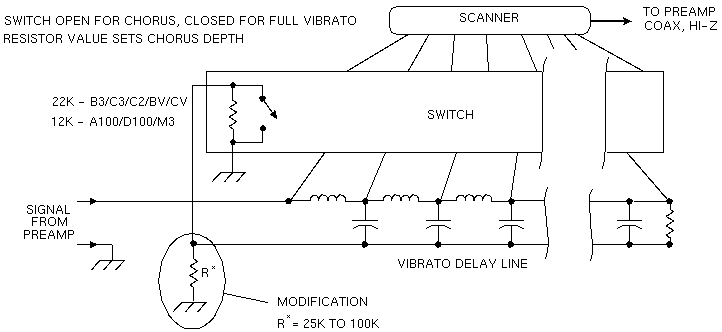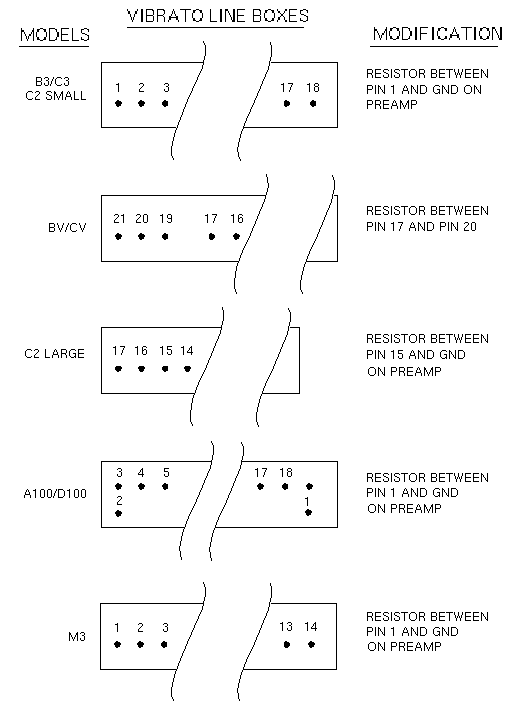
The value of this resistor can be reduced by paralleling another
resistor with it - at the vibrato line box - not inside the switch
assembly. The new resistor is externally mounted to the pins on the
vibrato delay line as indicated in the second figure under the
"Modifications" column. If your chorus is too deep (too much
vibrato), you'll have to increase the value of the resistor inside the
switch. This will require disassembly of the switch to change out the
resistor with one of a higher value. 68 kOhms ought to do
it.

The vibrato line boxes on the different models are somewhat different. While they have similar topologies, they differ in numbers of components, impedance, etc.. Before you actually solder anything in place, you might want to experiment with the amount of vibrato mix. Parallel a 100k potentiometer, wired as a rheostat, to the pins indicated on the second figure. If you need a ground to the preamp, run a wire to the preamp chassis somewhere. Tweak the rheostat until things sound nice and either replace it with a fixed value or just leave it in place.
I've tried this mod only on one of the models shown above. On all of the other models, I got the pinouts from looking at the service manual and schematics.
I'm interested in getting some feedback from those of you that try
this out.
Brad Baker, bpb@sprintmail.com

![]()